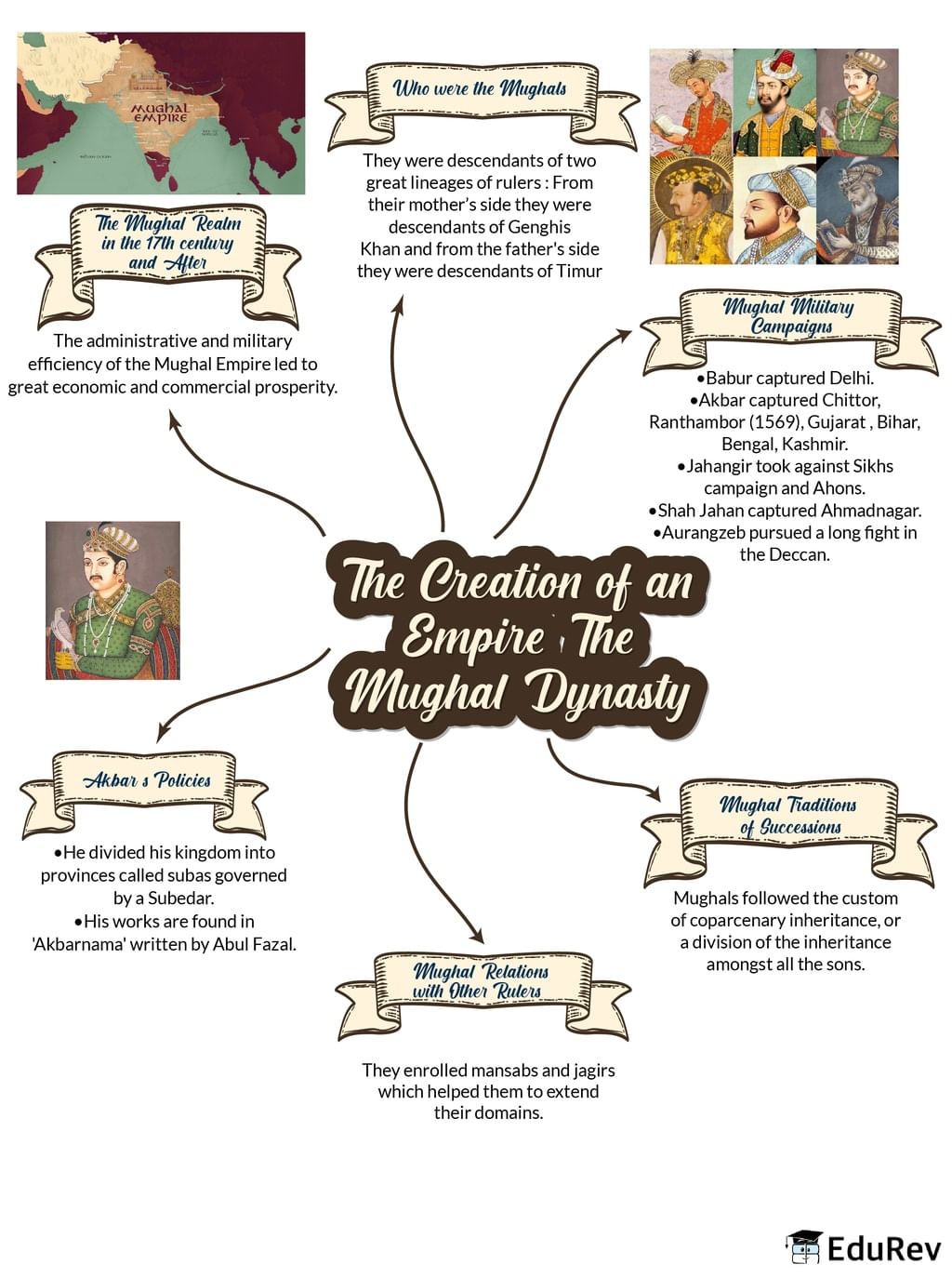Class 7 Exam > Class 7 Notes > Subject-Wise Mind Maps for Class 7 > Mindmap: The Creation of an Empire: The Mughal Dynasty
Mindmap: The Creation of an Empire: The Mughal Dynasty | Subject-Wise Mind Maps for Class 7 PDF Download

The document Mindmap: The Creation of an Empire: The Mughal Dynasty | Subject-Wise Mind Maps for Class 7 is a part of the Class 7 Course Subject-Wise Mind Maps for Class 7.
All you need of Class 7 at this link: Class 7
FAQs on Mindmap: The Creation of an Empire: The Mughal Dynasty - Subject-Wise Mind Maps for Class 7
| 1. What is the Mughal Dynasty and how was it created? |  |
Ans. The Mughal Dynasty was a powerful empire that ruled most of the Indian subcontinent from the 16th to the 19th centuries. It was founded by Babur, a descendant of both Timur and Genghis Khan, who established the dynasty by defeating the Delhi Sultanate and other regional kingdoms.
| 2. Who were the most famous Mughal emperors and what were their contributions? |  |
Ans. The most famous Mughal emperors were Akbar the Great, Jahangir, Shah Jahan, and Aurangzeb. Akbar is known for his religious tolerance and administrative reforms, while Jahangir focused on expanding the empire through diplomatic means. Shah Jahan is renowned for constructing the Taj Mahal and promoting arts and architecture. Aurangzeb, on the other hand, is known for his strict Islamic policies and expansionist ambitions.
| 3. How did the Mughal Dynasty impact Indian culture and society? |  |
Ans. The Mughal Dynasty had a profound influence on Indian culture and society. It fostered a rich synthesis of Indian and Persian cultures, resulting in the development of a unique Mughal art and architectural style. The dynasty also contributed to the spread of Islam in the region, although it practiced religious tolerance. The Mughals also introduced Persian literature and language, which greatly influenced Indian literature.
| 4. What led to the decline of the Mughal Dynasty? |  |
Ans. Several factors contributed to the decline of the Mughal Dynasty. These include Aurangzeb's oppressive policies towards non-Muslims, which led to rebellions and disunity within the empire. The constant wars of succession after Aurangzeb's death weakened the empire further. Additionally, the arrival of European powers, such as the British East India Company, challenged Mughal authority and eventually led to their downfall.
| 5. What is the legacy of the Mughal Dynasty in modern-day India? |  |
Ans. The Mughal Dynasty's legacy can be seen in various aspects of modern-day India. The architectural marvels like the Taj Mahal and Red Fort continue to attract tourists from around the world. The Mughals' contributions to art, literature, and music are still celebrated and continue to influence Indian culture. The dynasty's administrative and taxation systems also laid the foundation for future governance structures in India.

|
Explore Courses for Class 7 exam
|

|
Signup for Free!
Signup to see your scores go up within 7 days! Learn & Practice with 1000+ FREE Notes, Videos & Tests.
Related Searches

















